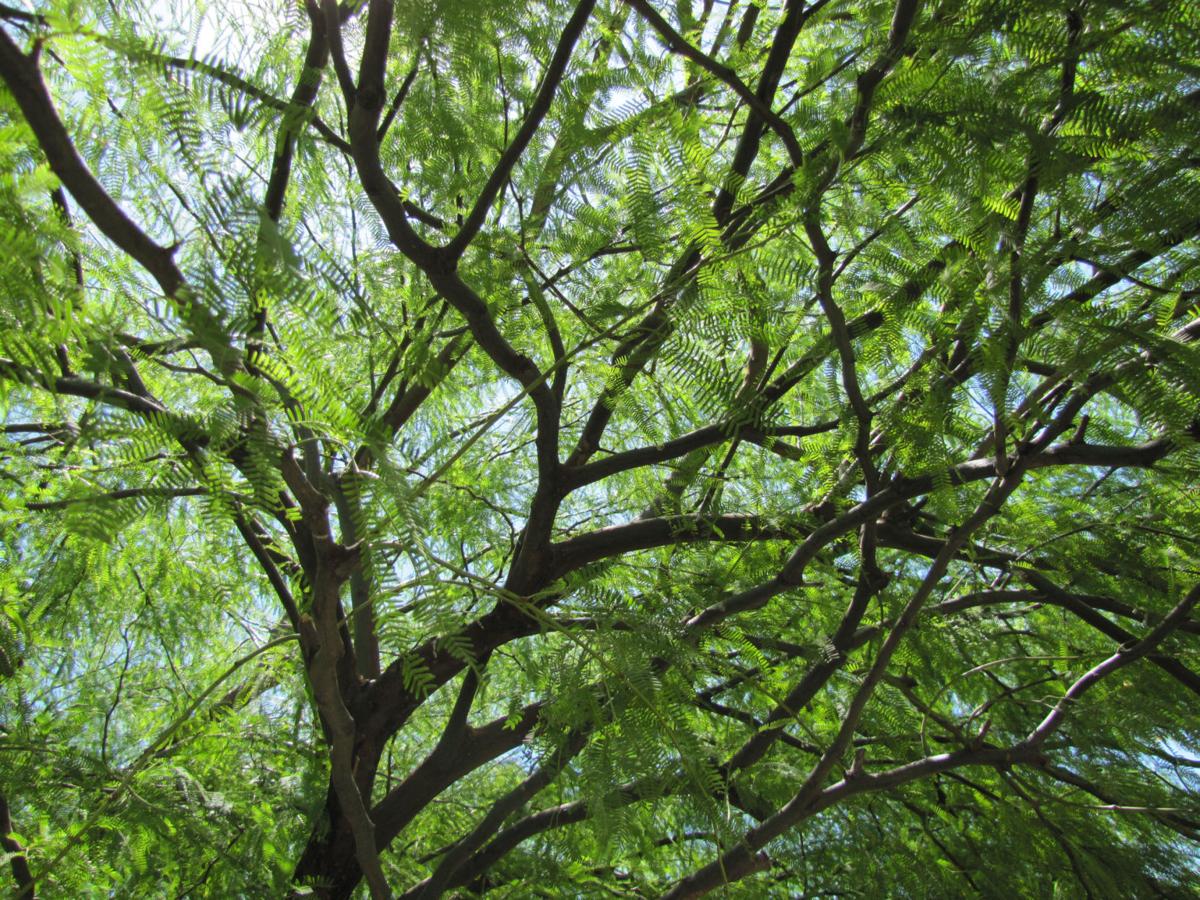Trees are a wonderful resource, particularly in the desert. They give us shade, cool our cities, help channel water effectively, provide habitat for necessary members of the ecosystem, and even provide us with food.
If you’re lucky enough to have a tree or two in your yard, you probably have noticed these benefits. The one downside to trees is that they take a while to grow enough to provide adequate shade — even the fast-growing ones. Thus, it’s in our best interest to care for the trees we already have, and make sure they stay as healthy as possible.
If you’re just starting out by planting a tree, make sure you read my article “The best way to plant a tree in Tucson”. This goes over important concepts such as putting the right tree in the right place and planting trees correctly so they establish well.
Once a tree is already growing in place, here are a few important ways to ensure its health.
Mulching correctly
Native trees can do well without mulch, but many will benefit from some. One exception is palm trees, which can be mulched with gravel but do not like organic mulch such as tree bark. The key is to make sure that you don’t have mulch near the tree’s trunk. Leave about a foot of clear space around the trunk so that the bark of your tree doesn’t get too moist and to keep pests away.
Nonnative trees will generally do better with some mulch, and trees that don’t like our lowest temperatures will benefit from 3-4 inches of organic mulch (like bark chips, shredded park, and the like). Mulch will help keep moisture in the soil and help with erosion, as well.
Watering correctly
Trees need to be watered to a depth of 3 feet and at the tree’s dripline. This means that you will need to move the tree’s irrigation outwards as the tree grows. You will also need to determine how deeply you are watering your tree. This is done with a soil probe. For more information, check out my watering guide which has instructions on how to do this.
If there’s any change to the watering regime in your yard, you will need to make plans for ensuring that your tree is still getting adequate water. For example, if your tree depends on water runoff from your roof and you install water harvesting tanks, you are diverting that water away from your tree and will need to replace that water somehow so the tree can continue to thrive.
Organic matter and fertilizer
Depending on your soil and the type of tree, you may need to add some organic matter to the topsoil around your tree. Fruit trees and many nonnative trees will benefit from some organic matter, particularly if your soil is very poor, or has a lot of sand or clay. Native trees in native soil will probably do fine without any additional inputs. With my native trees, I usually leave their leaves and other organic material around the base so that the tree itself recycles its own fallen organic matter. This saves on mulch and keeps the tree happy.
Palm trees and citrus trees require some additional fertilizer every year to be at their best. Check out the University of Arizona's “Arizona Landscape Palms “ and “Citrus Fertilization Chart for Arizona“ for the appropriate recommendations and schedules.
Pruning
Minimize pruning to dead, diseased, dangerous and damaged branches. Do not prune more than 20% of the tree per season. If your tree is too big for its space, avoid extreme pruning and get an arborist to help you formulate a plan for reducing its size with the least amount of stress and damage. Pruning a tree requires skill, knowledge and the proper equipment. I strongly recommend professional arborists for this reason, as they have the proper expertise and equipment to trim your tree safely and appropriately. Here’s a guide on “How to Hire a Tree Expert” from the University of Arizona Cooperative Extension.
Please resist the urge to trim more than necessary to “save money.” In the long run, this is likely to cost you money, as your tree will be extremely stressed and you will either need to provide it with more water and other inputs, or it will die prematurely and need to be replaced. A particular offense is over-trimming palm fronds. A palm tree’s fronds should never be trimmed past the horizontal line going through its canopy.
Preventing damage
In addition to careful pruning, avoid other types of damage to your trees. This includes constant trauma to the tree (from ropes, chains, things bumping or rubbing against it) and avoiding damage during trimming of other plants. Weedwhacker damage, caused by incautious grass trimming around a tree’s base, is particularly bad, and will eventually kill your tree.
Also, be careful not to damage the tree’s roots when you’re doing digging or putting in landscaping or fencing. Remember that a tree’s most productive roots are usually at the dripline and may be very small. Avoid digging these up or otherwise traumatizing them. Also avoid piling on soil or other substances inside the tree’s root area, as this will also damage the roots and very likely kill the tree.
Be very careful if you plan to use any herbicides. Particularly in the case of palm trees, some herbicides will kill trees, or at least damage the exposed tissues. I recommend against using any herbicides unless you’re trained in their use. Never use them on a day when the wind can carry the spray to other plants — your other plants and your neighbors will thank you.
Certain trees mysteriously avoid touching each other in the forest canopy, creating a leafy jigsaw puzzle in a phenomenon called “crown shyness.”





